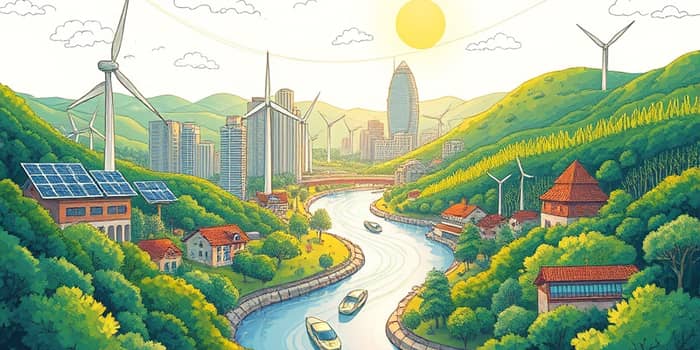
The intersection of finance and environmental stewardship has given rise to a powerful movement: eco-innovations that deliver both strong returns and a thriving planet. Across industries and regions, businesses and governments are embracing sustainable technologies with unprecedented vigor.
The global environmental technology market was valued at $714.74 billion in 2025 and is projected to reach $1,054.29 billion by 2032, reflecting a robust compound annual growth rate of 5.7%.
Within this broad category, distinct segments are experiencing explosive growth:
These figures underscore groundbreaking, game-changing eco-innovations and solutions that are reshaping investment landscapes.
Major breakthroughs are fueling both environmental and economic gains. Key segments include:
The fusion of digital and clean technologies is creating truly transformative solutions for global challenges, demonstrating that sustainability can be both profitable and scalable.
Financial outcomes of eco-innovations are compelling. Companies and countries realize:
With green tech markets growing at 19–23% CAGR, they outpace many traditional industries and offer long-term value for forward-thinking investors.
While eco-innovations are a global phenomenon, regional dynamics vary widely. A snapshot:
North America leads on revenue, supported by large-scale projects in California, Texas, and the Northeast. Asia Pacific, led by China’s carbon neutrality pledge and India’s renewables push, is the fastest climber. Europe maintains strength in sustainable materials and eco-design.
Three forces are propelling adoption:
Governments are enacting stringent emissions, waste, and efficiency regulations while offering incentives for R&D and deployment. In the U.S., the Inflation Reduction Act has funneled billions into clean energy. The EU’s Green Deal continues to tighten standards across member states.
Corporates have embraced net-zero commitments and ESG reporting. Leading firms are investing heavily in in-house sustainability teams and partnering with startups to accelerate innovation.
Consumers increasingly demand eco-friendly products and ethical brands. Surveys show that premium pricing for sustainable goods is widely accepted, driving companies to prioritize greener packaging and supply chains.
Looking ahead, several trends will shape the next decade:
By 2030, the sustainable materials market alone could be valued at nearly $80 billion globally, while energy storage, digital eco-solutions, and green infrastructure will redefine how we live and work.
In embracing these innovations, businesses and governments will unlock unprecedented economic opportunity and environmental benefits. The journey toward sustainability is not just about compliance—it is a pathway to resilience, growth, and a healthier planet for generations to come.
References





